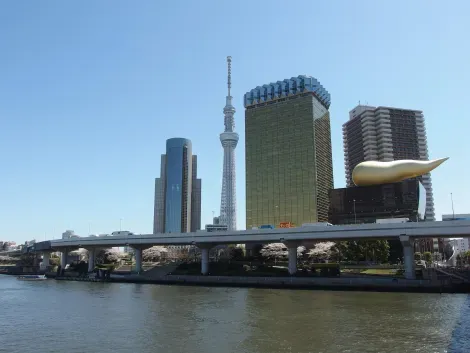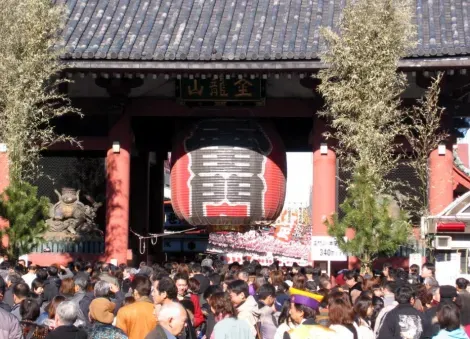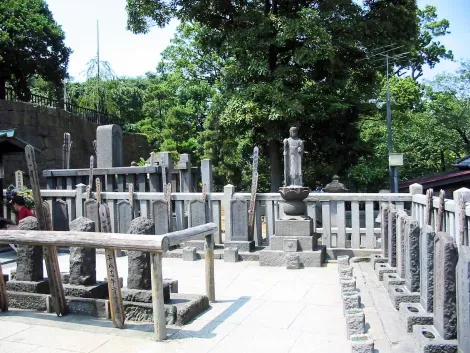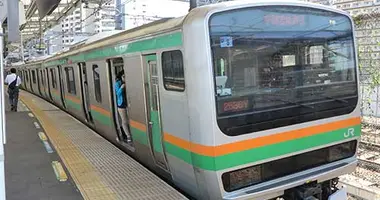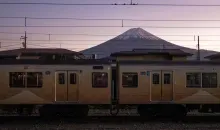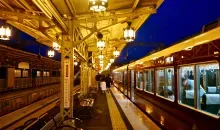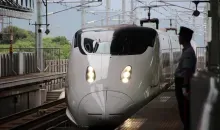Asakusa Line Tokyo - Discover the Toei Subway Line Connecting Key Areas of the City
The Asakusa Line is a vital subway line in Tokyo, forming part of the Toei Subway network operated by the Tokyo Metropolitan Bureau of Transportation. Running between Oshiage Station in the north and Nishi-Magome Station in the south, this rose-colored line on subway maps connects many popular destinations and cultural hubs across the city. The line gets its name from the famous Asakusa district known for its traditional Japanese atmosphere, which it passes under.
Spanning 18.3 kilometers with 20 stations, the Asakusa Line is a convenient way for both locals and tourists to navigate Tokyo. Thanks to through services with other railway lines like the Keikyu and Keisei networks, it provides a direct connection between Tokyo's two major airports - Haneda and Narita. Hop on a train and discover the many faces of Tokyo, from historic neighborhoods to modern shopping hubs.
Overview of the Toei Asakusa Line Route and Key Stations
Let's take a closer look at the Asakusa Line's trajectory through Tokyo and highlight some notable stations along the way:
- Oshiage (A20): The northeastern terminus, this station provides direct access to the Tokyo Skytree, Japan's tallest structure. Transfer here to the Keisei Oshiage Line, Tobu Skytree Line, or Tokyo Metro Hanzomon Line.
- Asakusa (A18): Alight here to visit Sensoji, Tokyo's oldest temple, and explore the traditional shitamachi atmosphere of Asakusa. The station connects with the Tobu Skytree Line, Tokyo Metro Ginza Line, and Tsukuba Express.
- Nihombashi (A13): This station serves the historic Nihonbashi district, home to its namesake bridge that was the starting point of the old Edo Five Routes. Transfer to the Tokyo Metro Ginza and Tozai lines.
- Higashi-Ginza (A11): Explore the upscale Ginza shopping district or catch a kabuki performance at the Kabukiza Theatre. Connect to the Tokyo Metro Hibiya Line here.
- Shimbashi (A10): A key transit hub with connections to multiple JR and subway lines. The area is known for its many izakaya pubs and its old station building, a railway history monument.
- Sengakuji (A07): Transfer here to the Keikyu Main Line. Nearby is the famous Sengakuji Temple, the resting place of the legendary 47 ronin depicted in the Chushingura tale.
- Nishi-Magome (A01): The line's southern end station, located near Ikegami Honmonji, an important Buddhist temple with Tokyo's oldest five-storied pagoda.
Access to Tokyo's Airports via the Asakusa Line
One of the Asakusa Line's major advantages is its direct airport connections. Travelers can reach Haneda Airport by transferring to the Keikyu Airport Line at Sengakuji Station (18 minutes, ¥300). For Narita Airport, switch to the Keisei Main Line or Narita Sky Access Line at Oshiage Station (55-75 minutes, ¥1,100-1,300).
The Access Express and Airport Limited Express offer the fastest airport service. Access Express trains run to Narita Airport Terminal 1 in as little as 51 minutes from Oshiage, while Airport Limited Express trains reach Haneda Airport's domestic terminal in just 35 minutes. Note that these may skip some stations on the Asakusa Line.
Making Transfers to Other Tokyo Subway and Train Lines
The Asakusa Line is well-connected with other railway networks in Tokyo, allowing for easy transfers. Within the Toei Subway system, you can transfer to the Oedo Line at Kuramae Station (A17).
There are multiple interchange points with the Tokyo Metro, including the Ginza Line at Asakusa and Nihombashi stations, and the Hibiya Line at Higashi-Ginza and Ningyocho stations. Shimbashi Station is a major hub served by several JR East lines like the Yamanote Line and Keihin-Tohoku Line, as well as the Yurikamome elevated train to Odaiba.
When changing between Toei Subway and Tokyo Metro, remember that they are separate fare systems. Unless using a Pasmo or Suica IC card, you will need to buy a transfer ticket or separate fare. Discounted transfer fares are available but require passing through a special transfer gate within the valid time (typically 30 minutes).
Asakusa Line Train Types and Services
Trains on the Asakusa Line come in a variety of colors and designs, as many are actually run by other operators like Keikyu, Keisei, and the Hokuso Railway. Cars are usually 18 meters long with four doors per side. Inside, you'll find a mix of longitudinal bench seating and some forward-facing seats.
Toei's own fleet on the line is the 5500 series, introduced in 2018 to replace older 5300 series trains. These eight-car aluminum trains utilize an energy-efficient VVVF inverter system and LED lighting. They have a maximum speed of 100 km/h and include wheelchair spaces and priority seats.
In terms of service types, the Asakusa Line offers Local (各停), Rapid (快速), Limited Express (快特), Access Express, and Airport Limited Express trains. Local trains make all stops, while rapid services skip some stations. Limited Express trains run through to the Keikyu and Keisei lines. As mentioned, the Access and Airport expresses are the fastest services to Narita and Haneda airports respectively.
Fares, Tickets and Discount Passes
Toei Subway fares are based on the distance travelled, starting at ¥180 for a single ride. You can buy tickets from multilingual machines at each station, which accept both cash and IC cards like Pasmo and Suica. Enter your destination station to determine the fare and purchase a ticket.
For a whole day of subway travel, consider the Tokyo Subway Ticket, which offers unlimited rides on the Toei and Tokyo Metro network for 24, 48, or 72 hours (¥800, ¥1,200, ¥1,500 respectively). This is a great deal for tourists looking to explore the city. Just be sure to purchase it from a Toei station pass office or machine, not the Tokyo Metro.
If you plan to use other Toei transportation like buses and trams as well, grab the Toei Marugoto Kippu for a discounted day pass (¥700 for adults). For even wider coverage, the Tokyo Combination Ticket (¥1600) adds JR lines within central Tokyo to the mix.
Tips for Riding the Toei Asakusa Line
Here are a few helpful hints for a smoother subway experience in Tokyo:
- Avoid rush hours (7-9am, 5-7pm) if possible, as trains can get extremely crowded.
- Have your ticket or IC card ready before reaching the ticket gate to avoid blocking other passengers.
- Line up on the marked spaces along the platform and let exiting passengers off the train first.
- Don't talk on your cellphone while on the train, and set your phone to silent mode to avoid disturbing others.
- Look for the overhead signs on the platform that indicate car positions and station information. Most are in both Japanese and English.
- Take advantage of station amenities like coin lockers and free Wi-Fi, available at major stations on the Asakusa Line.
With so many convenient connections and affordable fares, the Toei Asakusa Line is a fantastic way to get around while exploring Tokyo. Whether visiting historic sites, transferring to the airports, or just soaking up the vibrant atmosphere of the city, let this useful subway route be your guide. Happy travels!



